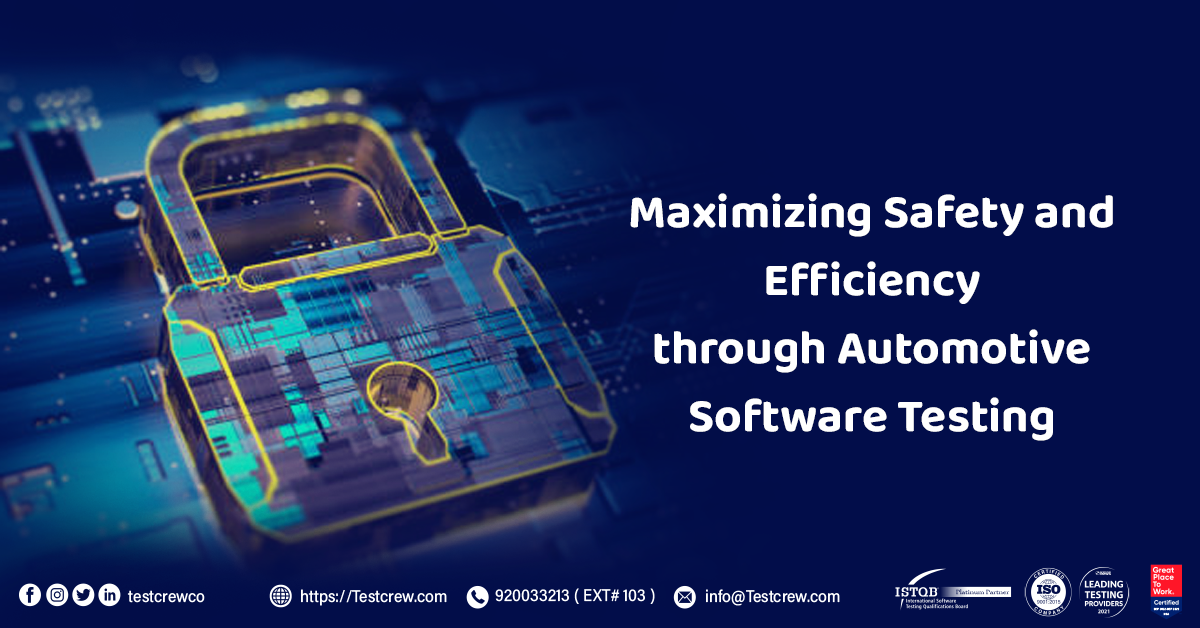
The automotive industry is a major contributor to the global economy, investing over $100 billion annually in research and development, and testing. Modern vehicles include many embedded systems to improve the safety and comfort of drivers and passengers like GPS-enabled maps, parking sensors, safety controls, and more. These systems have many benefits such as: Improved […]
The automotive industry is a major contributor to the global economy, investing over $100 billion annually in research and development, and testing. Modern vehicles include many embedded systems to improve the safety and comfort of drivers and passengers like GPS-enabled maps, parking sensors, safety controls, and more. These systems have many benefits such as:
Therefore, it is essential that the software is checked to ensure that it meets the specified requirements for the vehicle’s functions, as well as testing it to ensure that it integrates correctly with other systems in the vehicle, even slight faults could result in serious injury.
In general, the goal of automotive software testing is to ensure that the software in a vehicle is safe, reliable, and able to perform its intended functions correctly. By thoroughly testing the software, automotive manufacturers can help to ensure the safety and reliability of their vehicles.
There are several types of automotive software testing that are commonly used to ensure the safety and reliability of vehicles:
Overall, these types of testing are used to ensure that the software in a vehicle is safe, reliable, and able to perform its intended functions correctly. By thoroughly testing the software, automotive manufacturers can help to ensure the safety and reliability of their vehicles, which is essential for the protection of the occupants and other road users.
Safety and security have always represented a driving force in automotive engineering. Today, these performance criteria are more important than ever. With the increasing reliance on software and electronics in modern vehicles and the benefits of advanced technologies, the average of risks and potential failure modes will also increase. So, it is important to ensure that the software systems are functioning correctly and are free of defects.
There are several key aspects of automotive software testing that are designed to ensure the safety of vehicles:
This type of testing involves verifying that the software meets the specified requirements for the vehicle’s functions. This includes testing to ensure that the software can perform its intended tasks safely and correctly, as well as testing to ensure that it meets any relevant safety standards.
The advanced electronic systems in modern vehicles contain millions of lines of built-in program code that run them flawlessly. It is therefore crucial that these codes undergo rigorous testing by testers to ensure that the safety of human passengers is protected and that the highest safety standards are met.
Functional safety analysis ensures that automotive electronics deliver reliable performance over time, without system failures that create unreasonable risks.
Cybersecurity analysis is a significant part of the automotive development process as it ensures that complex electronics architecture is secure from attacks. By quickly identifying and remedying potential vulnerabilities, engineers can deliver safe products, reduce time to market, and maximize profits.
It ensures that time-critical sections of code meet timing deadlines.
It ensures that structural elements of the code (such as statements) have been tested to an acceptable degree.
We offer strategic software testing for the automotive industry to validate and improve vehicle system functioning. Rely on our extensive team of certified testing agents. There are several ways that TestCrew can contribute to the quality of automotive systems:
By taking an effective approach to quality control and by working closely with automotive manufacturers, our proficient testers can help to ensure that the automotive systems are of the highest quality and are able to meet the needs of their users safely and effectively. We have a full-fledged team of testing professionals having years of expertise and access to the latest testing tools and methodologies.
Here are some examples of test cases that might be used in automotive software testing:
These are just a few examples of the types of test cases that might be used in automotive software testing. The specific test cases used will depend on the specific requirements and functions of the software being tested.